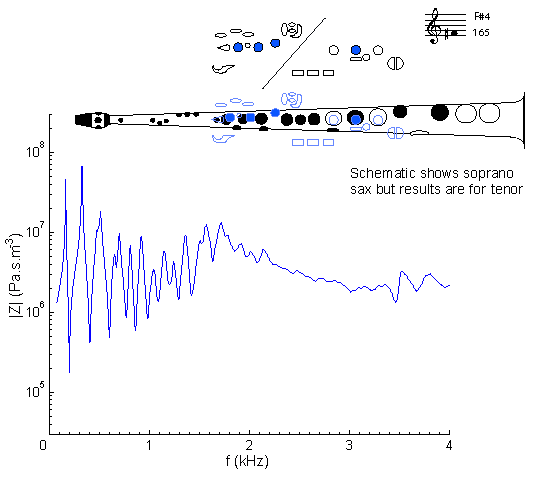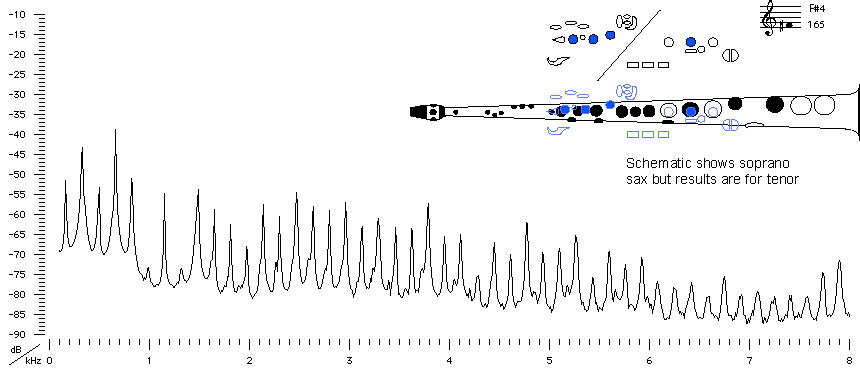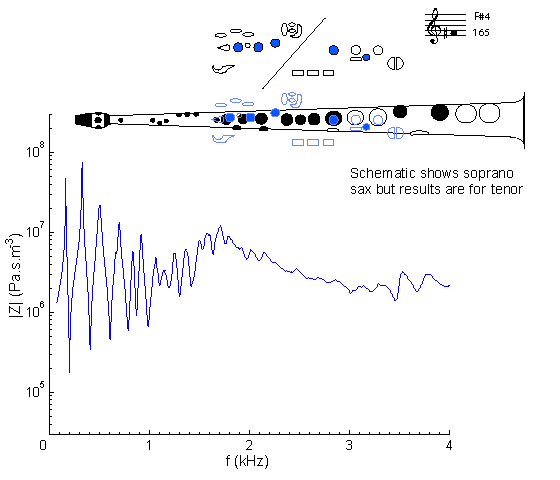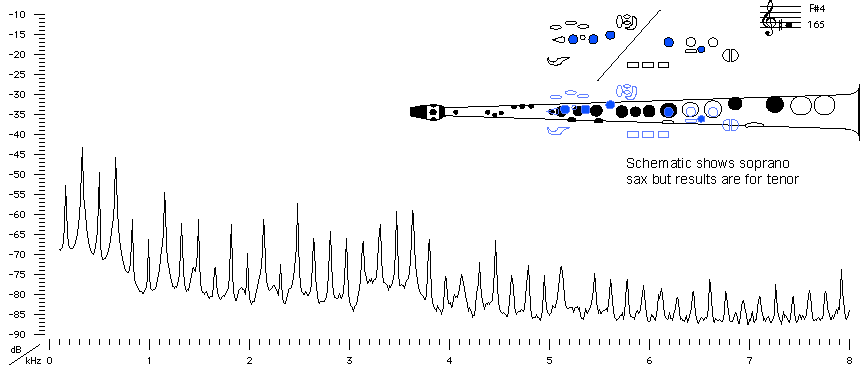| Acoustics of the saxophone |
Bb tenor saxophone |
F#4 |

|
Fingering Acoustic schematic Non-specialist introduction
to acoustic impedance Notes are the written pitch. |
At frequencies below about 1 kHz, this curve looks rather like that for E4 and F4, but raised in frequency. At higher frequencies, however, the situation is complicated by the cut-off frequency. Here, the 1 kHz cutoff is also weakening the third peak. The first peak can be reduced in magnitude and shifted in frequency using a register hole (operated by the octave key): see F#5.
This note is, acoustically at least, a cross fingering: there is a key closed below the first open key, as the schematic inset shows. This contributes to the irregularity of the impedance just above 1 kHz.
For general comments about the first register, see A#3. Compare with the impedance spectrum for a soprano sax on written F#4: same fingering but sounding one octave higher.

Sound spectrum
of a Bb saxophone
played using fingering for F#4.
For more explanation, see
Introduction to saxophone acoustics.
Alternative Fingering |
tenor saxophone |
 |
Fingering Acoustic schematic Non-specialist introduction
to acoustic impedance Notes are the written pitch. |

|
Contact:
Joe Wolfe
/ J.Wolfe@unsw.edu.au |